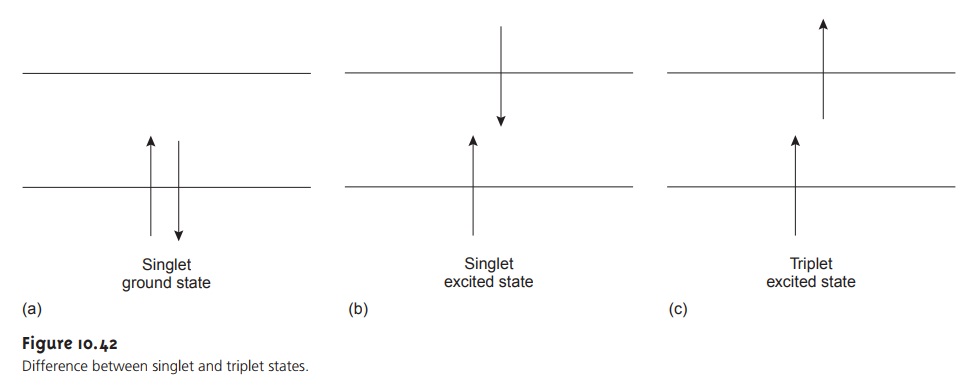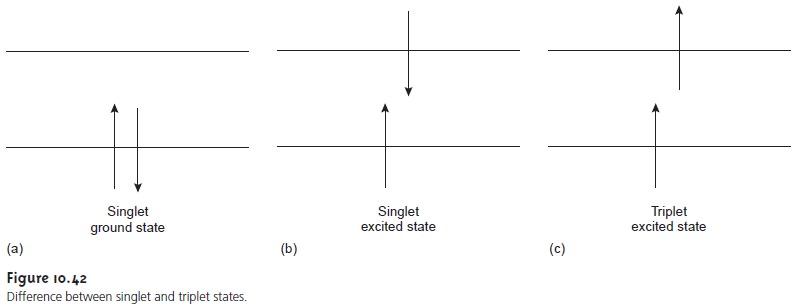Chapter: Modern Analytical Chemistry: Spectroscopic Methods of Analysis
Molecular Photoluminescence Spectroscopy

Molecular Photoluminescence
Spectroscopy
Photoluminescence is divided into two categories: fluorescence and phosphores- cence. Absorption of an ultraviolet or visible photon promotes a valence electron from its ground state to an excited state with conservation of the electron’s spin. For example, a pair of electrons occupying the same electronic ground state have oppo- site spins (Figure 10.42a) and are said to be in a singlet spin state. Absorbing a pho- ton promotes one of the electrons to a singlet excited state (Figure 10.42b). Emis- sion of a photon from a singlet excited state to a singlet ground state, or between any two energy levels with the same spin, is called fluorescence. The probability of a fluorescent transition is very high, and the average lifetime of the electron in the ex- cited state is only 10–5–10–8 s. Fluorescence, therefore, decays rapidly after the exci- tation source is removed. In some cases an electron in a singlet excited state is trans- formed to a triplet excited state (Figure 10.42c) in which its spin is no longer paired with that of the ground state. Emission between a triplet excited state and a singlet ground state, or between any two energy levels that differ in their respective spin states, is called phosphorescence.

Because the average lifetime
for phosphores- cence ranges
from 10–4 to 104 s, phosphorescence may continue for some time after
removing the excitation source.
The use of molecular fluorescence for qualitative analysis and semiquantitative
analysis can be traced to the early
to mid-1800s, with more accurate
quantitative methods appearing in the 1920s. Instrumentation for
fluorescence spectroscopy using filters and monochromators for wavelength selection appeared in, respec- tively, the 1930s and 1950s. Although
the discovery of phosphorescence preceded that of fluorescence by almost 200 years, qualitative and quantitative applications of molecular phosphorescence did not receive
much attention until
after the develop- ment of fluorescence instrumentation.
Related Topics